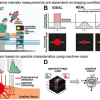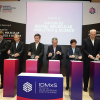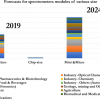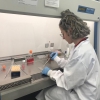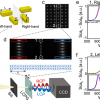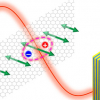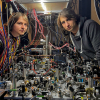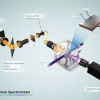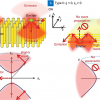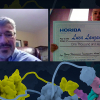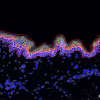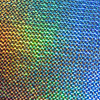Luminescence News
The combination discerns healthy tissue from tumours based on their spectral profiles with higher accuracy than fluorescence-guided surgery alone.
NTU Singapore has launched the S$160 million Institute for Digital Molecular Analytics and Science, which aims to advance the science behind analysing biomolecules through the use of information technology and data science.
A review of and prediction for the development of chip-based optical spectrometers.
The Gordon F. Kirkbright and Edward Steers awards are seeking nominations.
The first local managing director for Shimadzu Denmark, Joachim Holm, has been appointed.
As an industry partner, HORIBA will co-create, support and mentor a four-year research project to explore how spectroscopy can help drive new methods of cell screening and disease diagnosis based on animal-free research.
A new CD spectrometer can measure single nanostructures and also be used for weak signal measurements, such as polarised luminescence or Raman scatterings.
Researchers have developed a novel method of coherent 2D micro-spectroscopy, which provides spectral resolution for both excitation and detection steps in combination with microscopic spatial resolution and 20 fs temporal resolution.
HORIBA Scientific has presented Dr Ahmed Abdelfattah with the annual Young Fluorescence Investigator Award at the 2022 Biophysical Society event.
Researchers from the University of Warsaw have built the first quantum processor in Poland and are putting it to use in spectroscopy. They’ve demonstrated how quantum information processing can efficiently provide information on matter hidden in light.
Researchers improve their scientific understanding of heterogeneous catalysis by imaging the gas just above the surface of the catalyst.
The New York/New Jersey Section of the Society for Applied Spectroscopy are seeking nominations for their 2022 Gold Medal Award.
Fluorescence spectroscopy can identify contaminated drinking water and so reduce the spread of deadly diarrhoeal diseases by enabling communities to take action more quickly to limit exposure.
A recent review paper discuss photoluminescence control by hyperbolic metamaterials and metasurfaces.
Shimadzu has appointed Jürgen Semmler as the new Managing Director of its European organisation. He previously headed Shimadzu Deutschland since its foundation in 2006.
Applications are invited for two awards administered by the ABS Trust.
Wasatch Photonics achieves ISO 9001:2015 certification for their volume phase holographic diffraction gratings facility.
HORIBA Scientific has presented Dr Luca Lanzano with the annual Young Fluorescence Investigator Award at the virtual Biophysical Society virtual event.
Multimodal imaging is being used by scientists to study skin ageing through the interaction of metabolism, cellular communication and cellular quality control in skin ageing accelerated by environmental stress.
Strong investment in photonics will help us fight infectious diseases that kill an unimaginable number of people and prepare us against future pandemics, says Dr Jürgen Popp of the Leibniz Center for Photonics in Infection Research (LPI) that is currently under construction in Jena.

